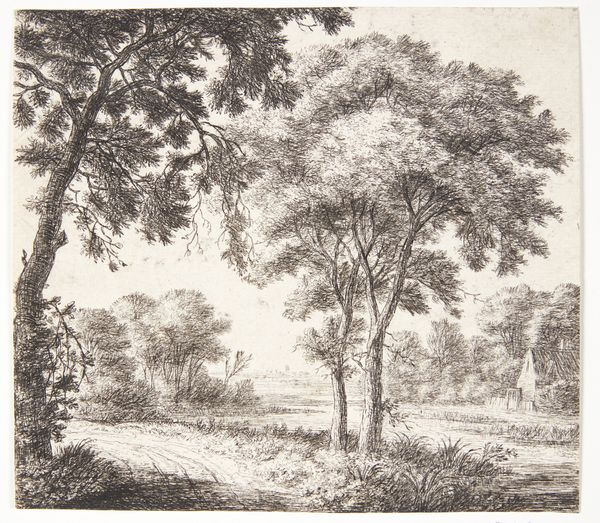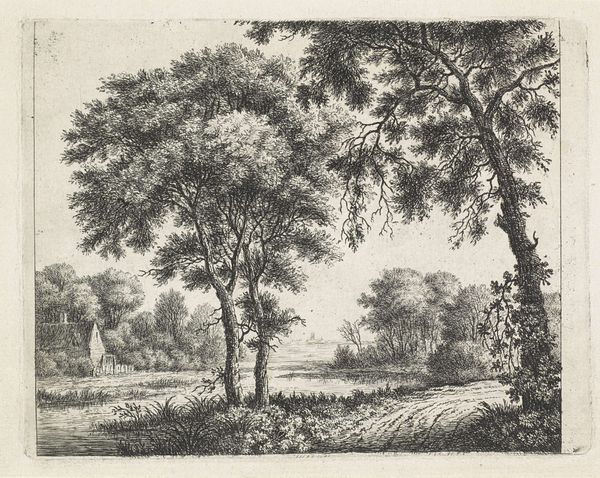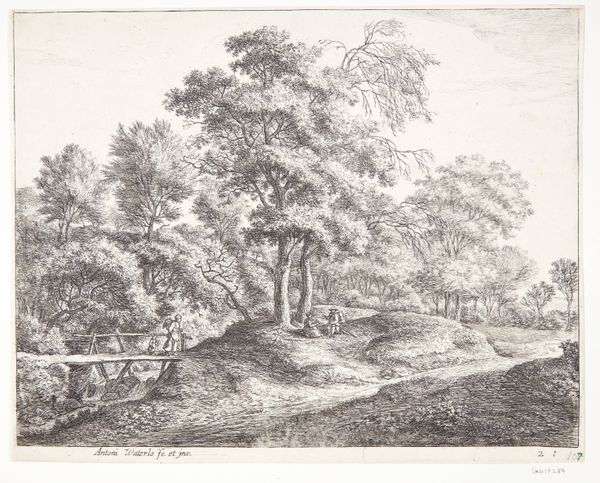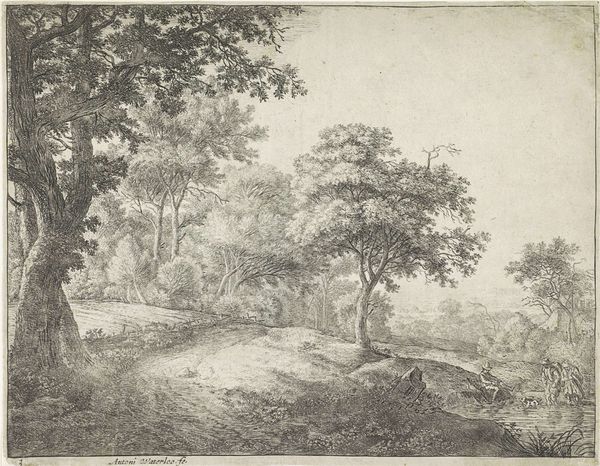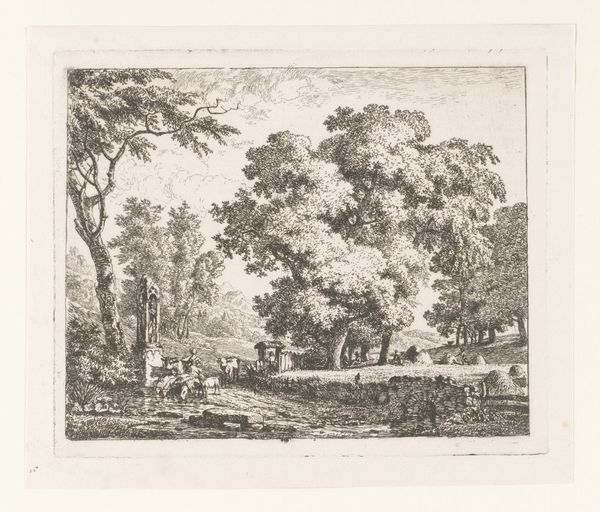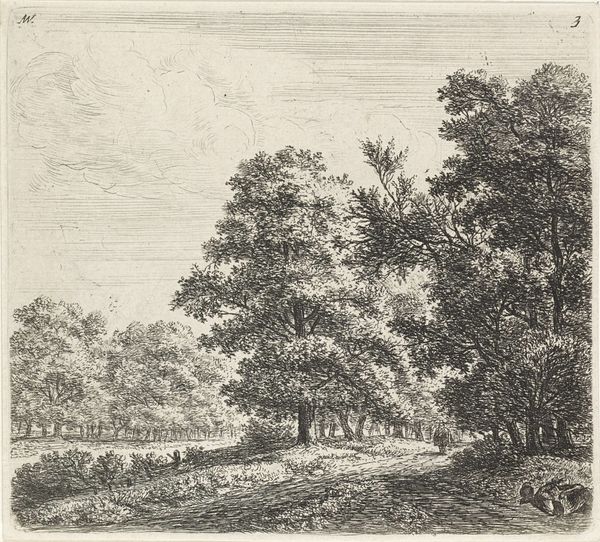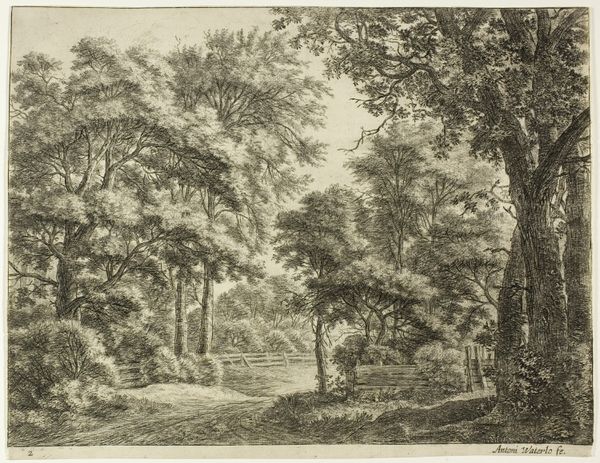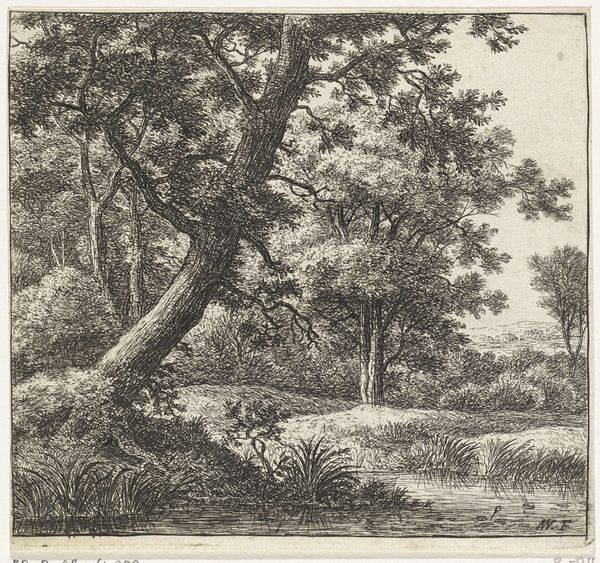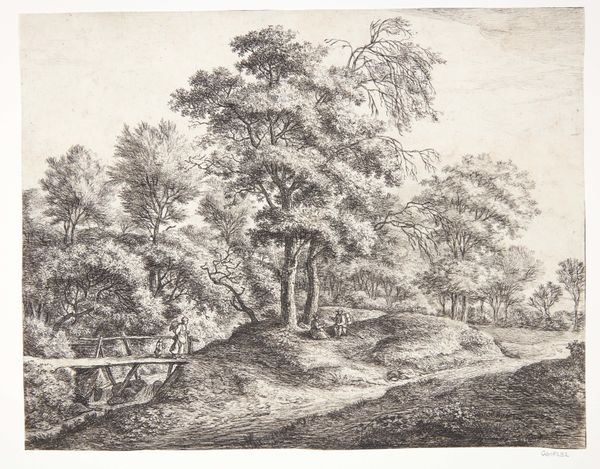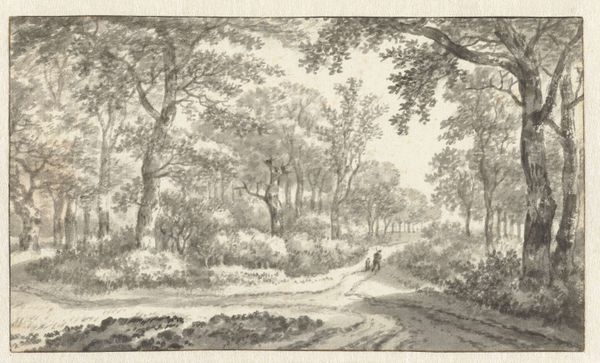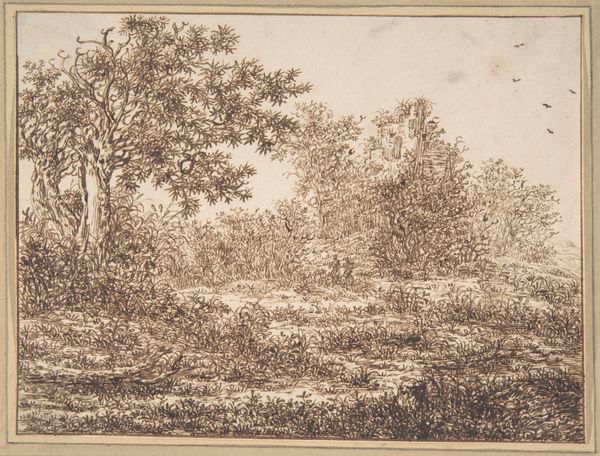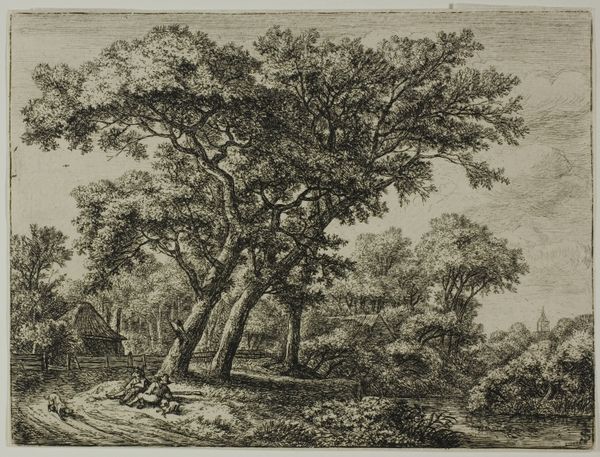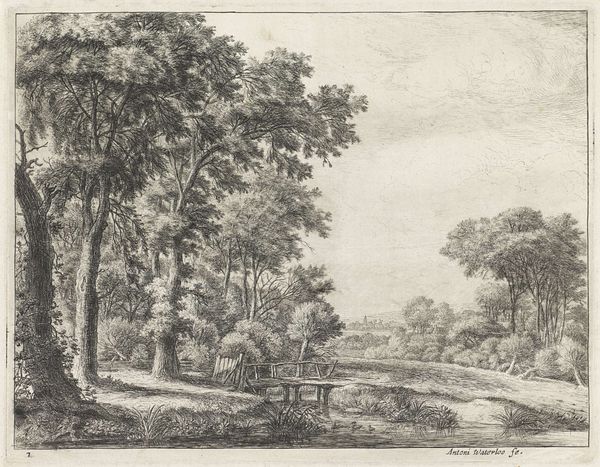
print, etching
#
baroque
#
dutch-golden-age
# print
#
etching
#
landscape
Dimensions: 127 mm (height) x 142 mm (width) (bladmaal)
Editor: We're looking at Anthonie Waterloo's "House on a Riverbank," an etching likely made between 1610 and 1690. It's a seemingly simple landscape, all done in blacks and grays, but something about the density of the trees feels almost claustrophobic. What strikes you about it? Curator: Ah, Waterloo! He knew how to breathe life into a landscape with just the barest of means, didn’t he? The "claustrophobia," as you called it, isn’t that curious? Most Dutch Golden Age landscapes invite you in. This one… holds you at arm’s length. I see a world teetering between bucolic charm and something far more… restless. Notice how the light almost claws its way through the thicket? Makes you wonder what shadows Waterloo himself was wrestling with, doesn't it? Editor: Shadows, yes. It almost feels… dramatic, despite being "just" a landscape. The way the trees frame the little house, it's like a stage. Curator: Exactly! The house, a tiny beacon against the looming trees – a fragile sanctuary, wouldn't you agree? It’s as if Waterloo is asking us: does this house represent safety or confinement? Is nature a comfort or a threat? Maybe the answer lies within the person looking. What do *you* feel looking at this tiny safe-heaven, but within an exuberant wild nature? Editor: I hadn't considered that. Maybe the house is whatever we *need* it to be. For me, right now, it's a little escape. Curator: Beautifully put. Perhaps Waterloo, in his dark and moody way, gifted us with not just a landscape, but a mirror. An interesting point of view of what beauty meant back then, would you agree? Editor: Definitely. I'll never look at a "simple" landscape the same way again. Thank you! Curator: The pleasure was all mine. Art is an amazing voyage in self discovery through the lense of others!
Comments
No comments
Be the first to comment and join the conversation on the ultimate creative platform.
